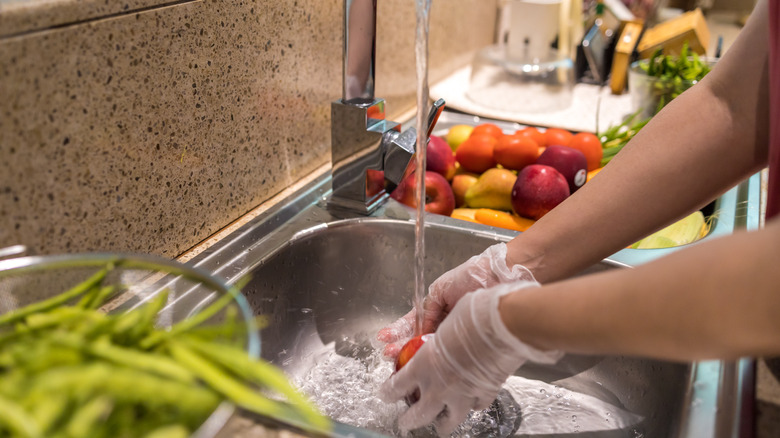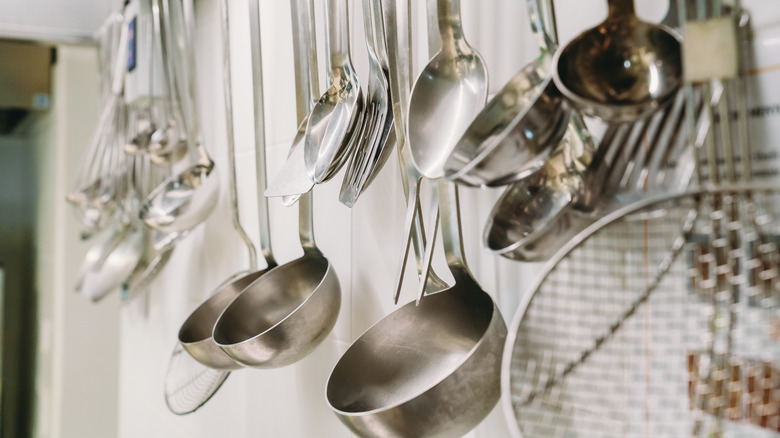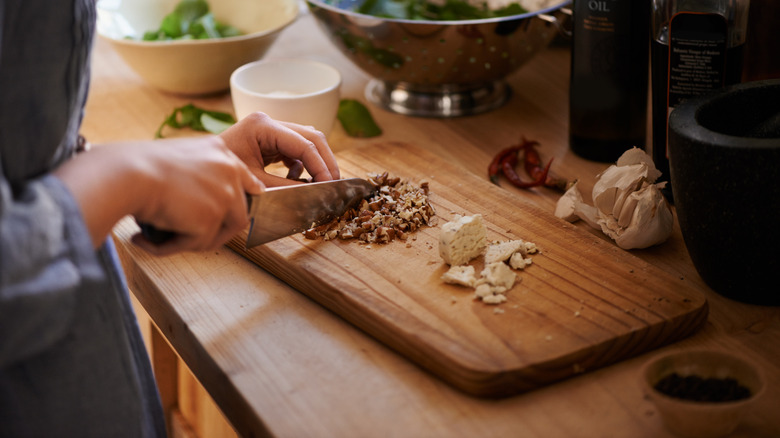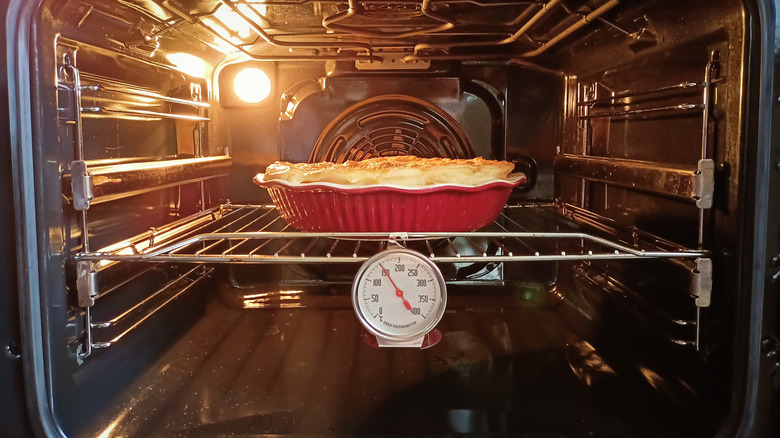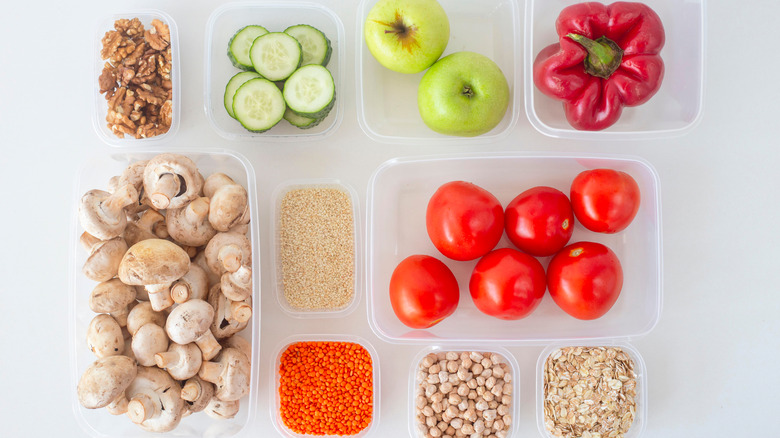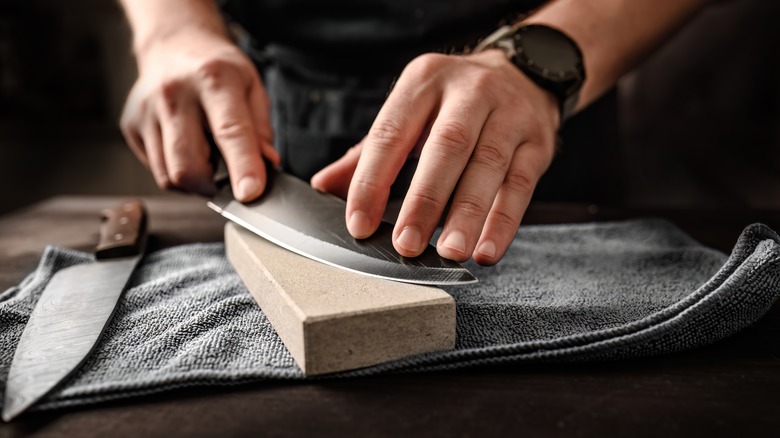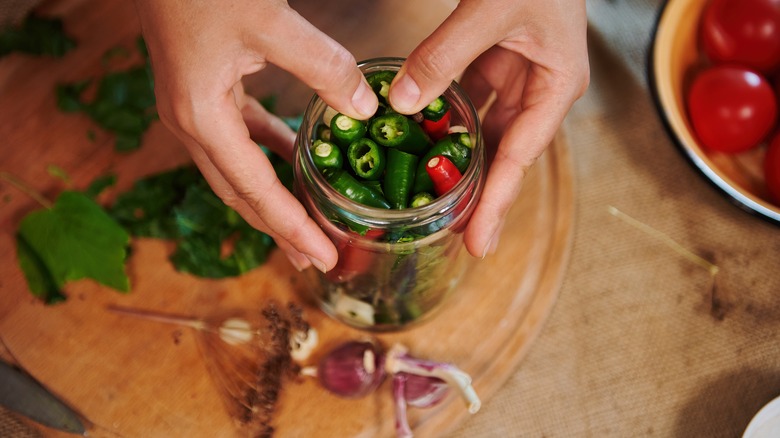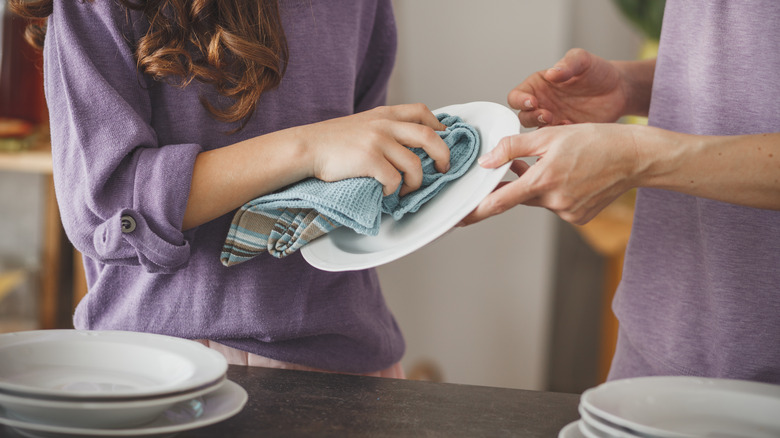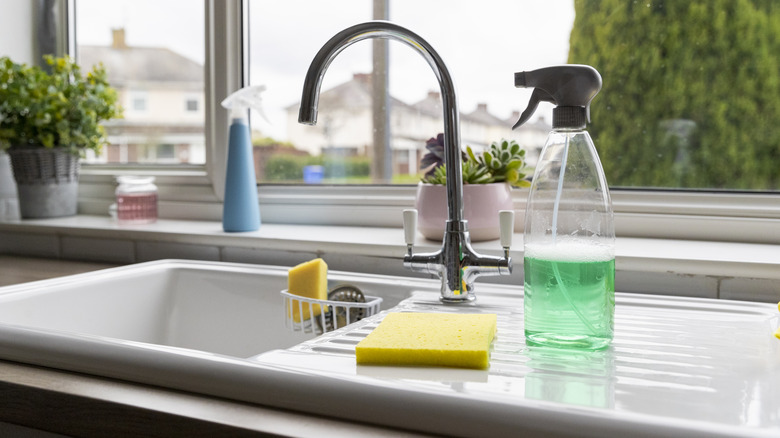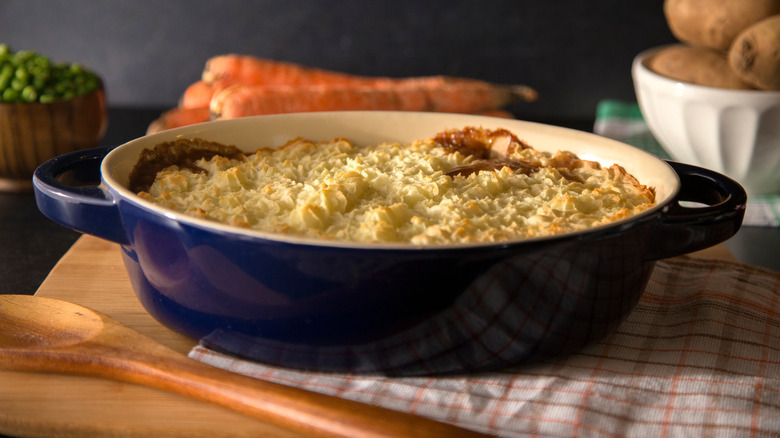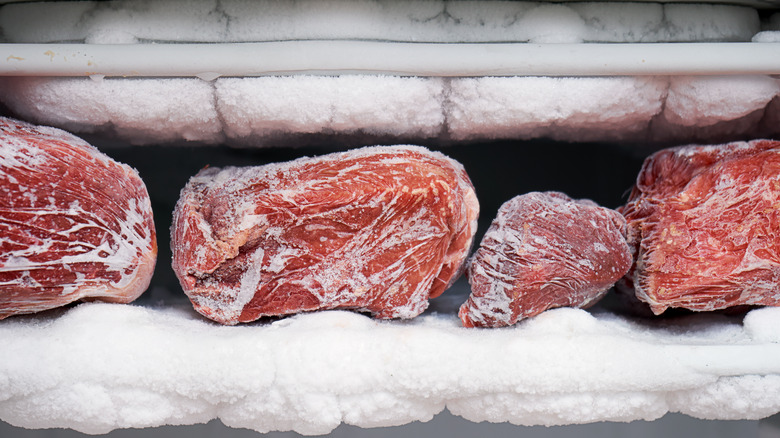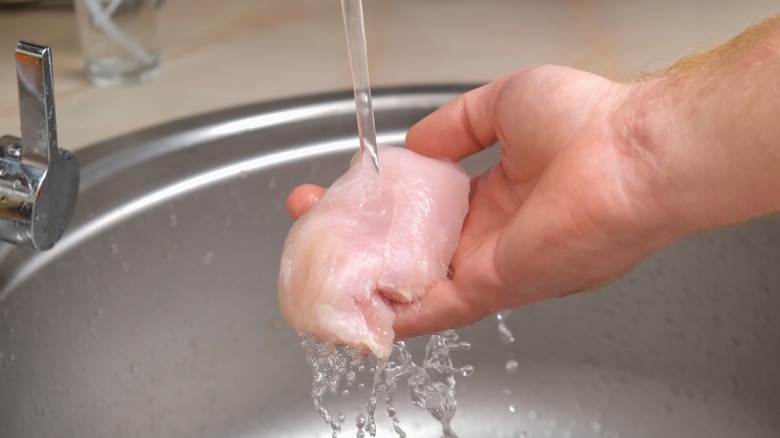11 Everyday Food Safety Mistakes To Start Avoiding Now
In today's culinary landscape, navigating the realm of food safety is paramount to ensuring the well-being of ourselves and those we cook for. From the supermarket to our kitchens, there's a myriad of potential pitfalls that can compromise food safety. Common issues such as cross-contamination, improper storage, and inadequate cooking temperatures lurk in the background, posing potential risks. Caring about food safety is essential for several reasons. First, it directly impacts our health and well-being. Consuming contaminated food can lead to foodborne illnesses, causing symptoms ranging from mild discomfort to severe health complications, particularly for vulnerable individuals. Second, practicing proper food safety measures contributes to a safer and more enjoyable cooking experience for ourselves and our loved ones.
As an avid food enthusiast and a dedicated scholar of culinary science, my passion for unraveling the mysteries of food safety is deeply ingrained. With a background in food systems and a focus on culinary science through my Master's studies, I bring both expertise and enthusiasm to the table. Throughout this article, I aim to infuse my love for food with practical insights, demystifying the complexities of food safety and offering actionable advice. Whether you're a seasoned chef or a culinary novice, my mission is to sift through this flood of information with precision, simplifying it for easy comprehension and implementation. Let's decode the complexities of food safety together!
1. Maintain hygiene across the kitchen: hands, tools, and surfaces
Regular cleaning keeps bacteria at bay, ensuring your kitchen remains a safe space for cooking up culinary delights. Maintaining a clean kitchen isn't just about appearances; it's a fundamental aspect of food safety and overall health. Beyond the aesthetic appeal of a sparkling countertop or gleaming stove, regular cleaning plays a crucial role in eliminating potentially harmful bacteria and preventing foodborne illnesses.
One of the primary areas where bacteria can thrive in the kitchen is on surfaces that come into contact with food. Countertops and utensils can harbor a variety of bacteria. Regular cleaning with hot, soapy water can effectively remove dirt, grease, and bacteria, reducing the risk of contamination. Hand hygiene is another critical aspect of kitchen cleanliness. Hands can easily transfer bacteria from surfaces or raw foods to cooked foods, increasing the risk of foodborne illness. Regular hand washing with soap and water, especially before and after handling food, can help reduce the spread of bacteria and other pathogens.
2. Prevent cross-contamination with separate cutting boards and plates
In addition to cleaning surfaces, it's essential to pay close attention to utensils and equipment used during your food preparation. Knives, cutting boards, and other tools should be washed thoroughly after each use to prevent cross-contamination between different foods. Using different cutting boards for raw meat, poultry, seafood, and produce can further minimize the risk of spreading bacteria from one type of food to another.
A great home kitchen hack is to use a separate cutting board for meat and to keep one large cutting board on your counter for vegetables and other food ingredients that are safe to eat raw. Then, if you are cutting meat, you can pull out a smaller cutting board and place it on top, use it, and then wash it. In this organizational strategy, you avoid the cross-contamination between cutting boards and ingredients. In fact, you can take this a step further and indulge in color-coded cutting boards! A lot of restaurants use the color-coded cutting board strategy as a best practice. By following this approach, you can avoid confusion when preparing a meal with numerous components, which often leads to using multiple cutting boards.
3. Cook food to the right temperature for safety
Discover the perfect cooking temperatures that not only make your meals delicious but also kick bacteria to the curb. Think of cooking temperatures as your secret weapon to ensure your meals are not only tasty but also safe to devour. By following the recommended cooking temperatures for various types of food you can ensure that harmful bacteria are effectively destroyed, minimizing the risk of foodborne illness.
Not just for ensuring food safety but also for enhancing quality, incorporating a food thermometer into your home kitchen arsenal can prove invaluable. If you aim to avoid dryness or overcooking in your meals, a food thermometer becomes indispensable. It enables you to achieve precise cooking temperatures and consistently produce perfectly textured and high-quality dishes. The U.S. Department of Agriculture provides an essential minimum internal temperature and rest time guideline that can be an excellent source for you in your own home. The guide gives you optimal temperatures for poultry, steak, fish, and even leftovers! Have you ever wondered what the optimal temperature for a casserole is? Fun fact, the USDA recommends 165 F.
4. Achieve fridge organization mastery for food safety
Let's dive into the world of fridge organization and how it can boost food safety. Keeping your fridge well-organized isn't just about tidiness; it's about ensuring your food stays fresh and safe to eat. First up, let's talk temperature. Your fridge should be set at or below 40 F to slow bacterial growth and keep perishable items fresh longer.
Use a fridge thermometer to double-check the temperature regularly. Next, let's tackle the top shelf. This prime real estate is perfect for ready-to-eat foods like leftovers, cooked meats, and drinks. Keep them covered or sealed to prevent cross-contamination. Your middle shelf is ideal for dairy products like milk, yogurt, and cheese. Finally, you can use the bottom shelf to store raw meat, poultry, and seafood in a sealed container to prevent juices from dripping onto other foods and causing contamination. Don't forget about the crisper drawers! Use one for fruits and the other for veggies to help maintain humidity levels and extend their shelf life. And finally, the fridge door is best for condiments and beverages. Keep in mind that the temperature fluctuates here, so avoid storing perishable items like eggs or dairy products.
5. The dangers of improper knife maintenance
You've probably heard the safety mantra: "The most dangerous thing in a kitchen is a dull knife." When comparing a very sharp chef's knife to a dull chef's knife, the answer is pretty clear: You are more likely to slip and cut yourself on a dull chef's knife than on a sharp knife that cuts predictably. Keeping your knives sharp is more than just a kitchen chore — it's a safety essential. Explore the risks of dull blades and how a sharp edge can keep accidents at bay, ensuring your kitchen stays accident-free.
For knife care and maintenance, sharpening your knives regularly is ideal for a consistent experience. The way you use knives changes depending on whether they're at their correct sharpness. To avoid a dull knife without a knife sharpener, you should avoid placing your knives in the dishwasher and sink. This increases the risk of damaging or nicking the knife, resulting in less than ideal performance.
6. Understand the importance of proper sterilization for canning
When it comes to home food preservation, the importance of proper sterilization techniques when canning food are vital to prevent bacterial contamination and ensure the safety of home-canned products. Canning is a process that is used in the kitchen to extend the shelf life of products while also maintaining the quality, think pasta sauces, jams/jellies. While it is an incredible way to preserve some of your favorite items, it should be noted that there are some precautions to be aware of for safe home canning.
Generally, the canning process involves placing foods in jars or cans and heating them to a temperature that destroys microorganisms that could be a health hazard or cause the food to spoil. There are two methods for canning: a boiling water bath or a pressure canner procedure. To prepare your jars for canning, you will need to make sure they are completely clean and free from any food debris or dirt. You will need to place the jars in a large pot and fill the pot with water, making sure to cover the jars. Next, boil the jars in the water for 10 minutes. Make sure to remove the jars with tongs as they will be hot to touch! The jars should be fully dry before placing fruits or vegetables inside. Lastly, make sure to check the proper cleaning instructions on the lid per the manufacturer's description.
7. Keep kitchen towels and potholders separate for hygiene
By keeping kitchen towels and potholders separate, you're essentially creating designated roles for each item in your kitchen. This not only helps maintain hygiene but also promotes efficiency and organization. Kitchen towels are typically used for wiping surfaces, drying hands, and cleaning up spills. Since they come into contact with various surfaces and substances, they can harbor bacteria and other contaminants.
On the other hand, potholders are primarily used for handling hot cookware and dishes. While they may encounter heat, they generally don't come into contact with as many different substances as kitchen towels. A bonus is that separating these items makes it simpler to establish washing routines! Kitchen towels typically need to be laundered more frequently than potholders due to their higher exposure to dirt and moisture. By keeping them separate, you can easily identify which items need to be washed and when helping to prevent the spread of germs and maintain a clean kitchen environment.
8. Sanitize kitchen sponges to avoid bacterial contamination
Sponges can spread harmful bacteria all over your kitchen and keeping them clean is important in preventing the risk of contamination. How might we sanitze sponges in our kitchen to prevent the spreading of pesky germs? If you follow these guidelines, you can be a lot more responsible in your own kitchens. You can use the microwave method or dishwasher method to be most effective at home.
For the microwave method, dampen the sponge and place it in the microwave for 1 minute on high heat. The heat generated will kill most bacteria and germs present in the sponge. Be cautious when removing the sponge from the microwave, as it will be hot. It is important to note that sponges that have a metallic scrub side should not be placed in the microwave; instead, they can be placed in a dishwasher. Boiling water: boil a pot of water and submerge the sponge in the boiling water for about 5 minutes. The heat from the boiling water will effectively kill bacteria and sanitize the sponge. Remember, while microwaving and dishwashing sponges are effective, the best thing you can do is to change your sponges frequently.
9. Stay mindful of room temperature dangers to prevent bacterial growth
Gain insight into the concept of the "danger zone" for bacterial growth and learn why it's crucial to minimize the time food spends in this temperature range to prevent bacterial multiplication and foodborne illnesses. We have all been guilty of leaving food out a bit longer than expected. Maybe you got home late or completely forgot about the casserole sitting on the counter. Unfortunately, allowing food to sit at room temperature for extended periods provides an ideal environment for bacteria to grow, leading to food spoilage and potential foodborne illnesses.
Per the USDA, "Bacteria grow most rapidly in the range of temperatures between 40 F and 140 F, doubling in number in as little as 20 minutes." This range of temperatures is often called the "Danger Zone." When it comes to storing leftovers and reheating, it is ideal to follow trusted guidelines. In order to avoid bacteria making its way into your culinary creations, prompt refrigerators should be adhered to. Around 2 hours after food has come to room temperature, it should be refrigerated. When it comes to reheating leftovers thoroughly, ensure they are heated to an internal temperature of 165 F to kill any bacteria present. Use a food thermometer to check the temperature.
10. Safely thaw and refreeze foods to minimize bacterial risks
Imagine a scenario: Your power suddenly goes out, and your precious frozen items are at risk of completely thawing. Or perhaps you rush out the door for work, only to realize later that you left your frozen meal sitting on the counter all day. How can you salvage these items and ensure they remain safe to eat? Properly thawing and refreezing food items is not just a matter of convenience; it's crucial for maintaining food safety in the kitchen. The key is to act swiftly, preventing food from lingering in the "danger zone" where bacteria thrive.
The USDA states that the safe thawing temperature for poultry, eggs, cooked, and raw meat is 40 F. After that, bacteria can arrive and cause you to discard your food. Refreezing within a certain time can be accepted, and it's generally safe to refreeze foods that were previously frozen as long as they were thawed properly and remained at a safe temperature during thawing. One method for quick thawing is to use a cool running water bath. By immersing the frozen item in cold water, you can speed up the thawing process while keeping it at a safe temperature. This technique is especially handy when you're in a hurry and need to thaw meats or other perishable items quickly. By understanding the importance of swiftly cooling down and removing food from the danger zone, you can confidently navigate unexpected situations and ensure the safety of your meals.
11. Raw chicken safety tip: Skip the rinse to prevent contamination
A valuable safety tip when handling raw chicken is to skip the rinse. Contrary to what some may think, rinsing raw chicken is not recommended, as it can actually increase the risk of cross-contamination in your kitchen.
When you rinse raw chicken under running water, water droplets can splash and spread bacteria from the chicken onto nearby surfaces, such as countertops, utensils, and other foods. According to the Centers for Disease Control and Prevention, this can lead to the transfer of harmful bacteria like Salmonella or Campylobacter, increasing the risk of foodborne illness. When handling raw chicken, it is best to use a separate cutting board intended solely for meat and to keep this cutting board within a good distance between other materials that it could come in contact with and potentially cross-contaminate. Additionally, washing any knives or utensils that have touched raw chicken before making contact with the rest of your ingredients is ideal. And don't forget to wash your hands!
